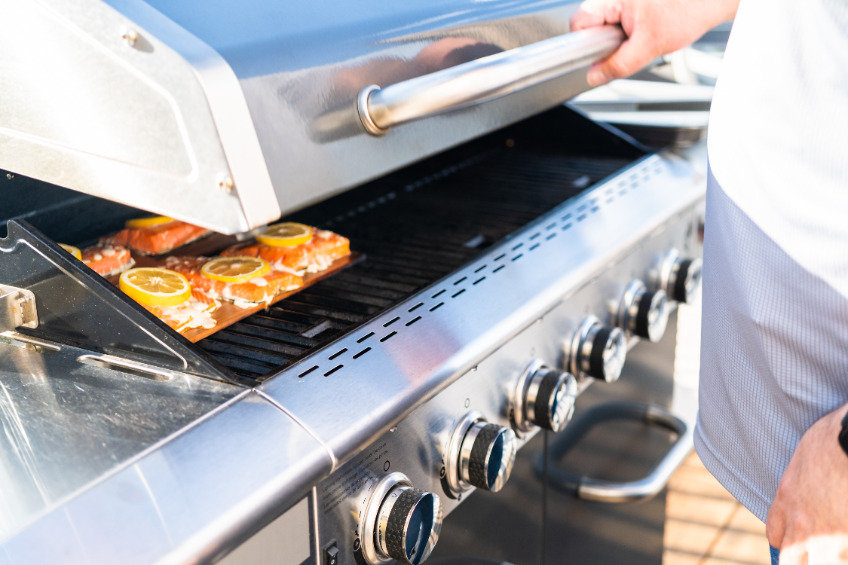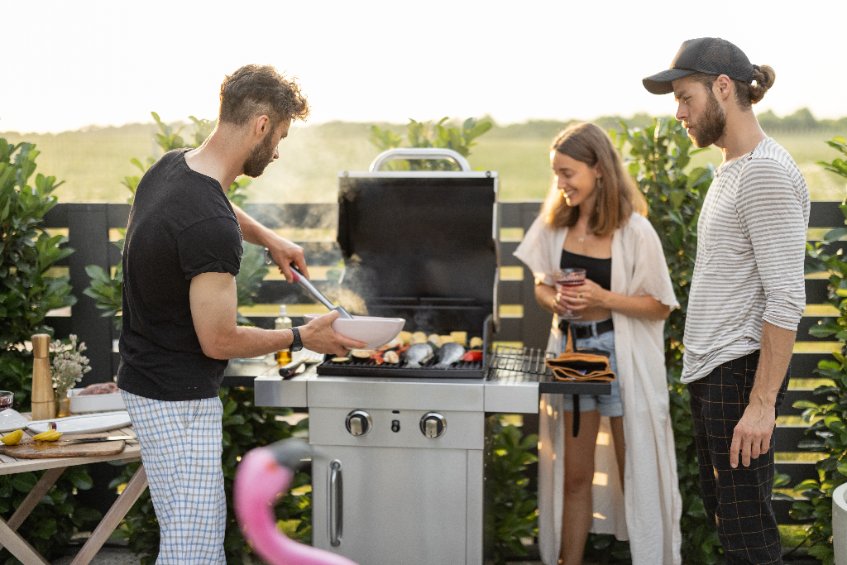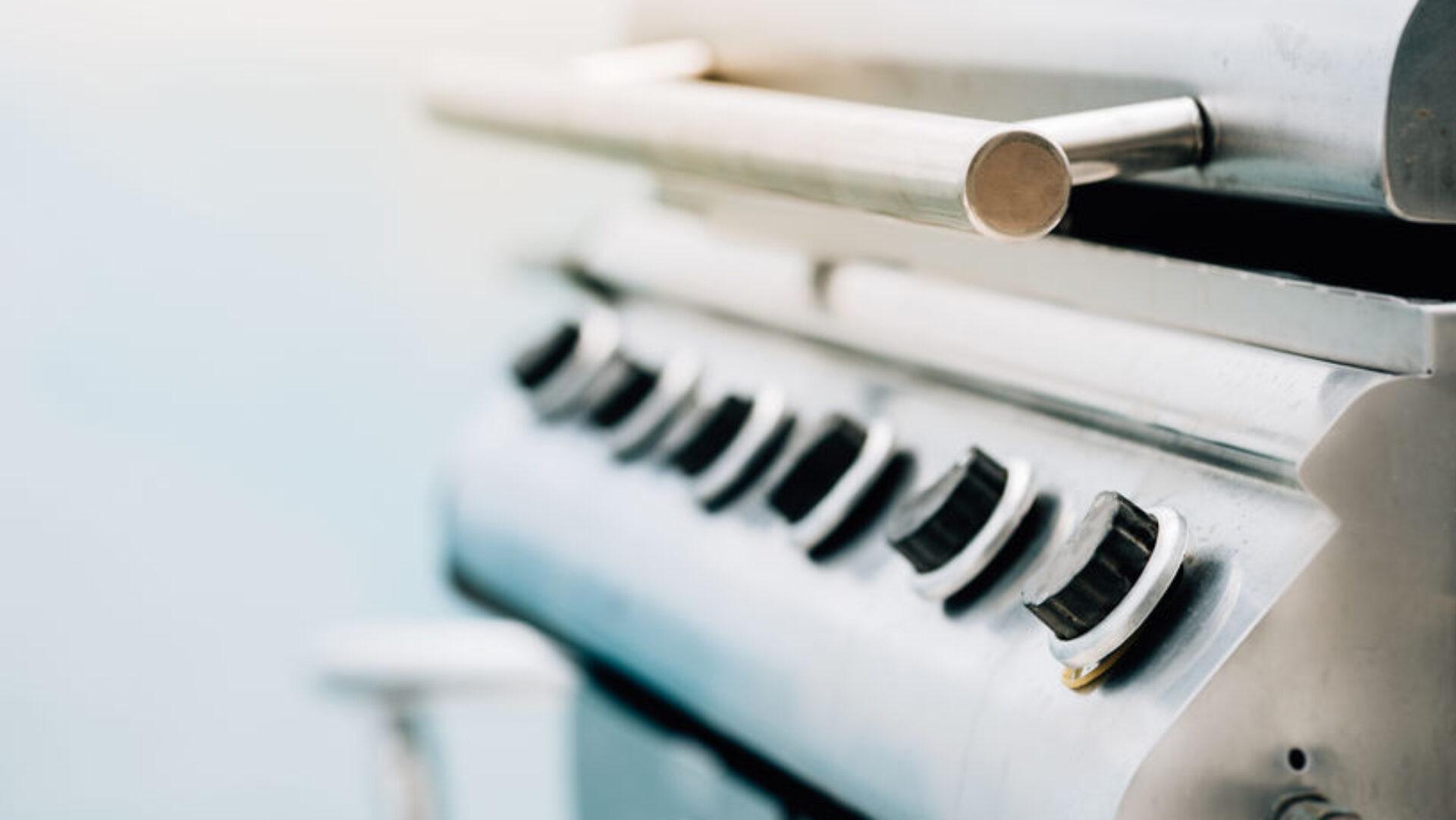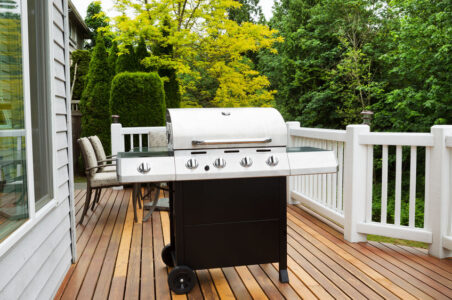This content has been archived. It may no longer be relevant

Gas grills are the most popular option for outdoor cooking.
The convenience and reliability of gas are unmatched by charcoal or pellet grills.
Gas grilling is also intuitive.
Turn the knob to set a temperature, and the gas regulator takes care of the rest.
If there’s one point of confusion that stumps new owners, it’s how to use a grill with two or more burners.
Do you have to use all burners on a gas grill?
You don’t need to use all the burners on a gas grill.
Sometimes it’s better not to.
Why Do Some Grills Have More Burners?

Grills, particularly outdoor gas grills, can come with varying numbers of burners, typically ranging from one to six or more.
The number of burners in a grill is determined by several factors, including the desired cooking capacity, versatility, and convenience for the user.
- Cooking capacity. More burners in a grill generally mean more cooking space and the ability to cook larger quantities of food simultaneously. This is particularly useful for grilling for a larger group of people, such as during parties or gatherings, where you may need to cook multiple items at once, such as meats, vegetables, and side dishes. The additional burners allow for better heat distribution and more precise control over the cooking process, resulting in more even and efficient cooking.
- Versatility. Grills with multiple burners offer greater versatility in terms of cooking options. Each burner can be independently controlled, allowing for different temperature zones on the grill grates. This is helpful when cooking different types of food that require different heat levels or when using different cooking techniques, such as direct grilling and indirect grilling. With more burners, you can create various heat zones to sear meat on high heat on one side while cooking vegetables on lower heat on the other, giving you more flexibility in your cooking.
- Convenience. Multiple burners can make grilling more convenient and time-efficient. For example, you can use one burner for quick preheating, another for searing, and another for keeping food warm. This eliminates the need to constantly move food around or wait for the grill to reach different temperature levels, making the cooking process more efficient and convenient.
It’s worth noting that the number of burners is not the only factor to consider when choosing a grill.
Other factors such as the grill’s overall size, construction quality, materials, and additional features should also be taken into account based on your personal preferences and grilling needs.
Indirect Cooking with a Gas Grill
Indirect cooking, also known as indirect grilling or convection cooking, is a technique used in grilling where the food is cooked using indirect heat rather than placing it directly over the flame.
This method is commonly used for larger cuts of meat that require longer cooking times, such as roasts, whole chickens, or ribs, as well as for delicate foods that are prone to burning or flare-ups.
Here’s how you can do indirect cooking with a gas grill.
- Preheat your gas grill. Turn on your gas grill and preheat it to the desired temperature for your recipe. It’s important to have one side of the grill set to a high heat for direct grilling, and the other side set to a lower heat or turned off for indirect cooking.
- Set up the grill for indirect cooking. Once the grill is preheated, turn off the burners on one side of the grill or set them to low heat. This will create an indirect heat zone on that side of the grill. Place a drip pan or a disposable aluminum foil pan underneath the cooking grates on the side with the burners off or set to low heat. This will catch any drips or grease and prevent flare-ups.
- Place the food on the indirect heat zone. Place the food you want to cook indirectly on the side of the grill without direct heat, directly above the drip pan. This allows the food to cook slowly and evenly through convection, with the heat circulating around the food, similar to cooking in an oven.
- Close the grill lid. Close the grill lid to create an oven-like environment and trap the heat inside for even cooking. This helps to maintain a consistent temperature around the food and prevents flare-ups.
- Monitor and adjust. Monitor the temperature of your grill using a grill thermometer and adjust the heat as needed to maintain the desired temperature for your recipe. You may need to adjust the burners on the direct heat side of the grill to control the overall temperature.
- Cook to desired doneness. Cook the food according to your recipe, turning it occasionally if needed. Use a meat thermometer to check the internal temperature of the food to ensure it’s cooked to the desired doneness.
Indirect cooking with a gas grill allows for more controlled and even cooking of larger cuts of meat, resulting in juicy and flavorful results.
It’s important to follow proper safety precautions and manufacturer’s instructions for your specific gas grill to ensure safe and effective cooking.
How Big Should Your Grill Be?
 Having multiple burners can be an advantage, but how many do you need?
Having multiple burners can be an advantage, but how many do you need?
The size of the grill you choose depends on your individual needs, cooking preferences, and available space.
Here are some factors to consider when determining the appropriate size for your grill.
- Cooking capacity. Consider how much food you typically grill at once. If you often cook for a large group of people, such as during gatherings or parties, you may need a larger grill with a larger cooking surface to accommodate multiple items at once, such as meats, vegetables, and side dishes. On the other hand, if you mostly grill for a smaller household or occasional entertaining, a smaller grill may suffice.
- Available space. Measure the space you have available for your grill, including the outdoor area, patio, or deck where you plan to place it. Make sure the grill you choose fits comfortably in the available space, leaving enough clearance around it for safety and convenience. Consider the grill’s dimensions, including the width, depth, and height, as well as any additional space needed for side shelves, propane tanks, or other accessories.
- Cooking versatility. Think about the types of cooking you plan to do on your grill. If you enjoy a wide range of grilling techniques, such as direct grilling, indirect grilling, smoking, or rotisserie cooking, you may need a larger grill with additional features, such as multiple burners, warming racks, or side burners. These features can increase the overall size of the grill.
- Budget. Your budget can also be a factor in determining the size of your grill. Larger grills with more features tend to be more expensive, so consider your budget and choose a size that meets your cooking needs without exceeding your budget.
- Portability. If you need a portable grill for camping, tailgating, or other on-the-go activities, you may prioritize a smaller grill that is lightweight and easy to transport. Portable grills are typically smaller in size and designed for mobility.
It’s important to choose a grill size that fits your specific needs and preferences, and that also complements the available space and budget you have.
Consider the factors mentioned above and carefully review the specifications of different grills to determine the appropriate size for your grilling requirements.
The average home cook can grill with two burners.
This allows for higher temperatures, indirect cooking, or more ingredients cooking thoroughly on the grill surface.
You can cook for a family and entertain small parties of guests with a two-burner grill.
The Weber Spirit II E-210 is a popular option. If you want more space and versatility, you could use a three-burner grill, which is suitable for larger groups and larger ingredients like turkey cooked over indirect heat.
The Weber Spirit II E-310 is a reliable three-burner option. From there, you could move up to five or even six-burner grills, depending on how much space you need.
You don’t need to use all the burners on your grill at the same time but having the space and the option is a bonus.

